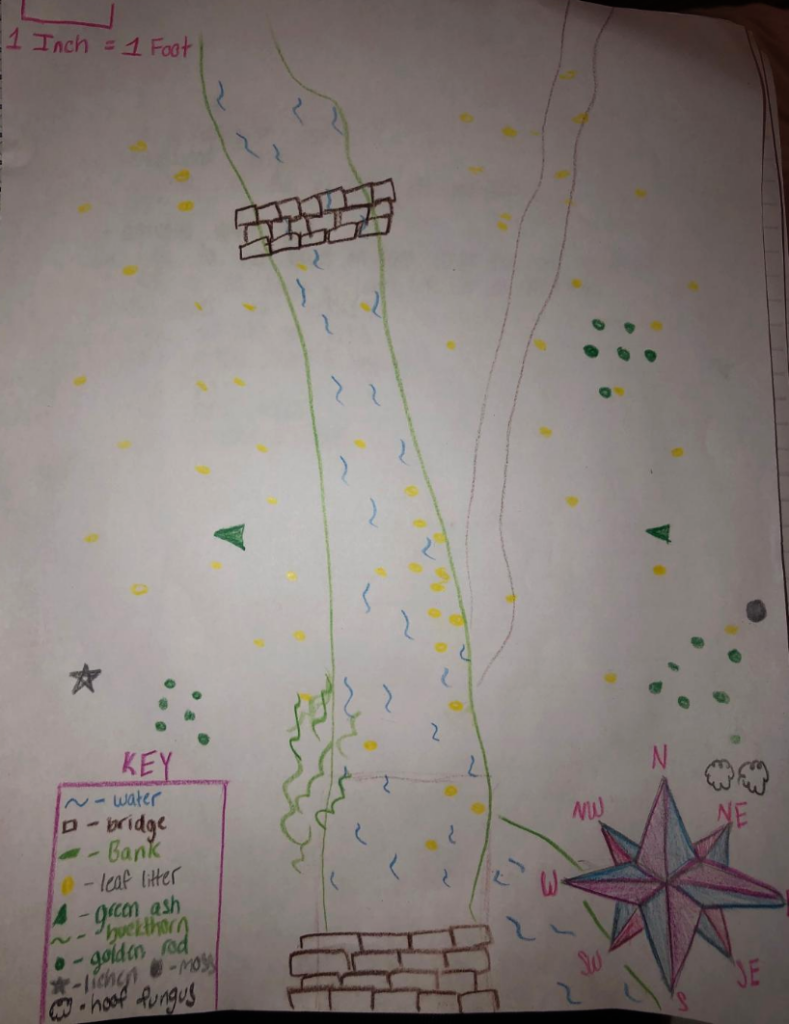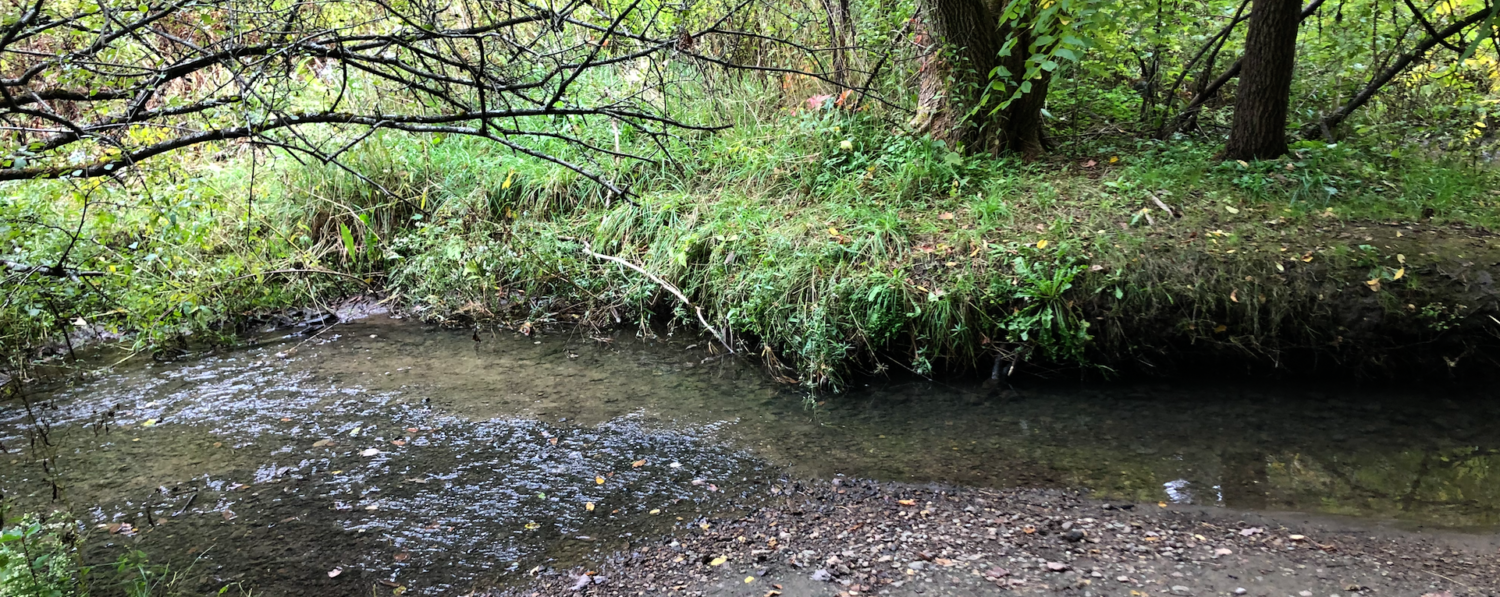The stream is much more active than it was a few weeks ago. Rain flooded the area and abolished what was once an almost stagnant flow. Any leaf litter that clogged the stream had been washed away and the banks were bristling with overflow. The stream had become so strong and pulsing that it reconfigured the formation of the bridges. One can only assume they had been washed away and someone moved then to a different location. They aren’t far from their original spot, but it’s still a very different formation and a very different feel to the area with such heavy amounts of water rushing through. The day was clear and slightly warm with intermittent breezes. Birds had dropped in number since less calls could be heard. In addition to the stream overflowing from the storm, the soil was moist and muddy all along the bank and in several spots leading up to the area. That last visit had proved to be much dryer. Considering the fact that the leaf litter had dissipated from the stream, so had almost all the leaves from the trees. There was one lone red maple that was still holding on to some of its yellow turned leaves.
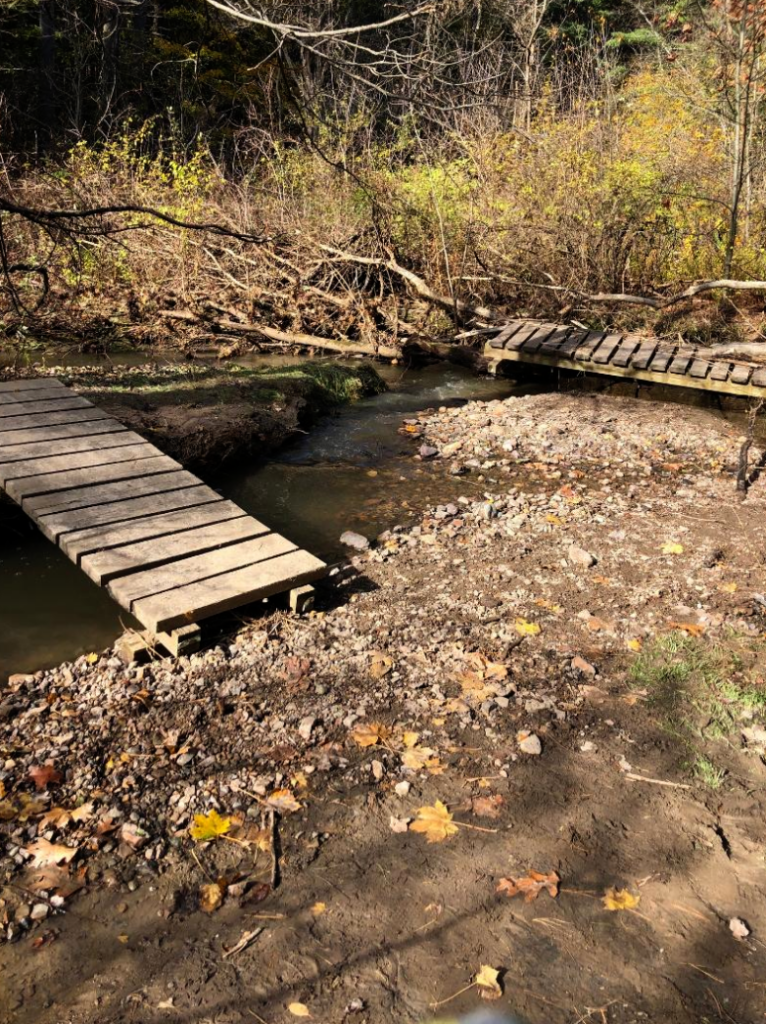
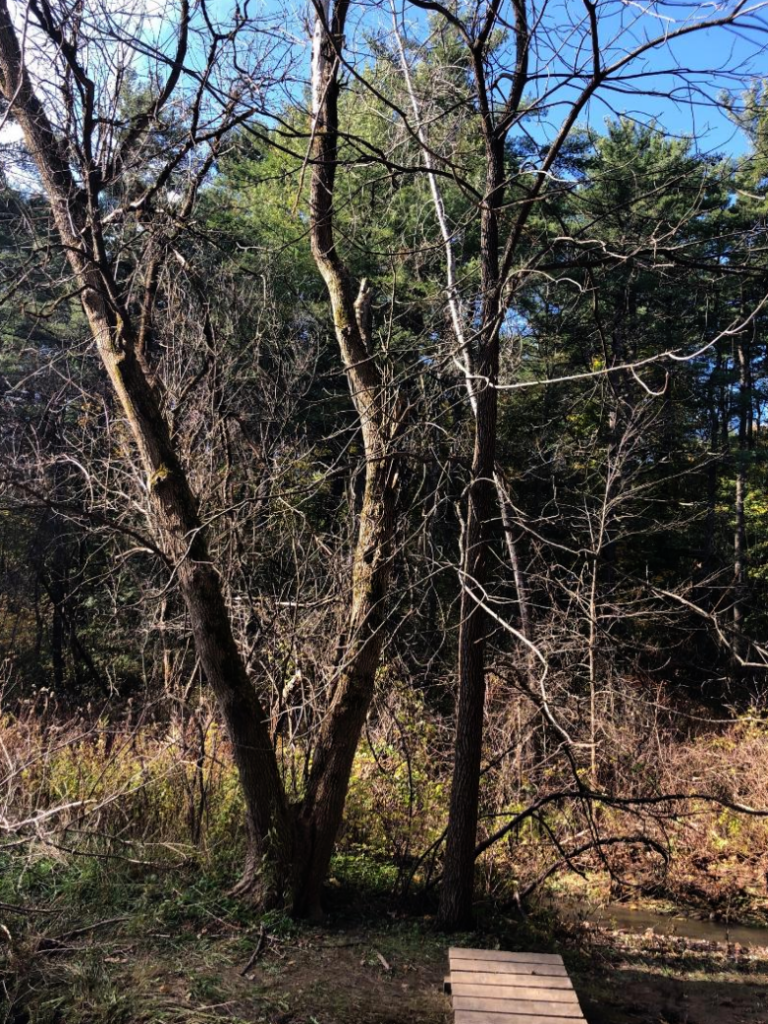
Regarding the life left in the area, there was one plant that seemed to be an invasive species that was still releasing fluffy seeds into the air. It was some form of golden rod, but it dominated the different parts of the banks. The few green ash’s in the area had lost their leaves, as well as the buckthorn which had been a defining feature along the bridge before the bridge floated to a different location. There was a section of barberry bush which had lost its leaves but was still holding on to a few red berry’s. Some organisms such as moss, lichens, and fungi, had yet to succumb to the impending cold or heavy rains. The fungi were identified as a tinder or hoof fungus since the shape the fungus grows into is similar to that of a horse’s hoof. They are pretty strong-willed organisms and were all found attached to different trees in the area, one being the red maple. One organism that is not common to the area but was there at the time of observation was my dog Cleo. You can see her by the stream pictured here.
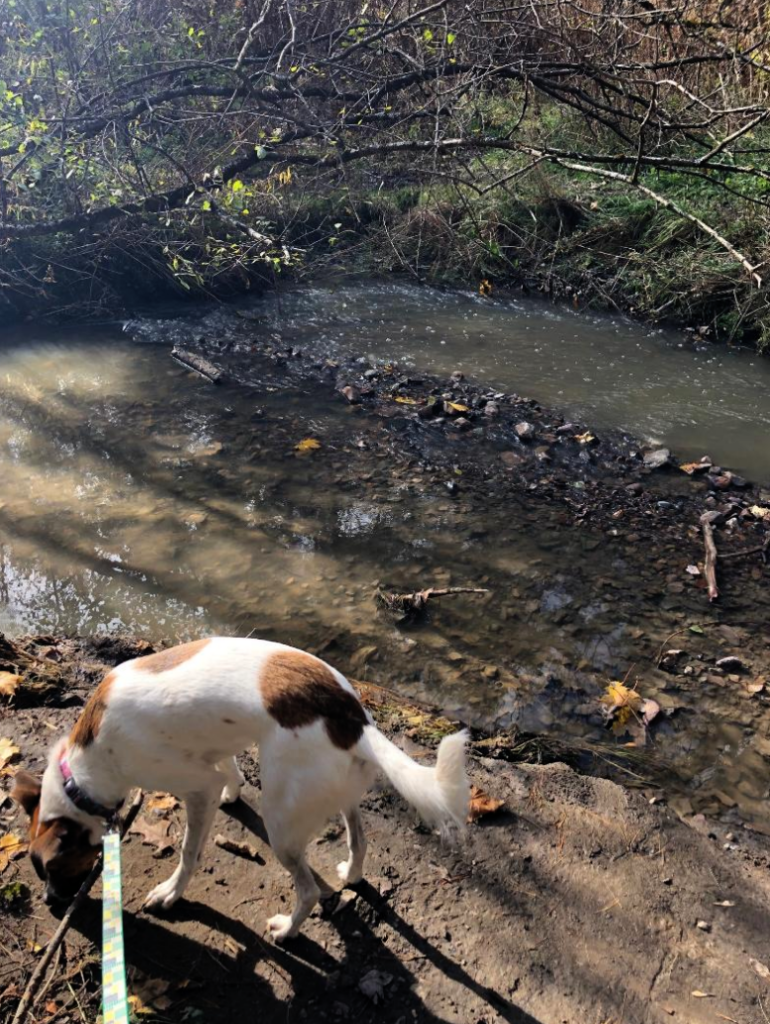
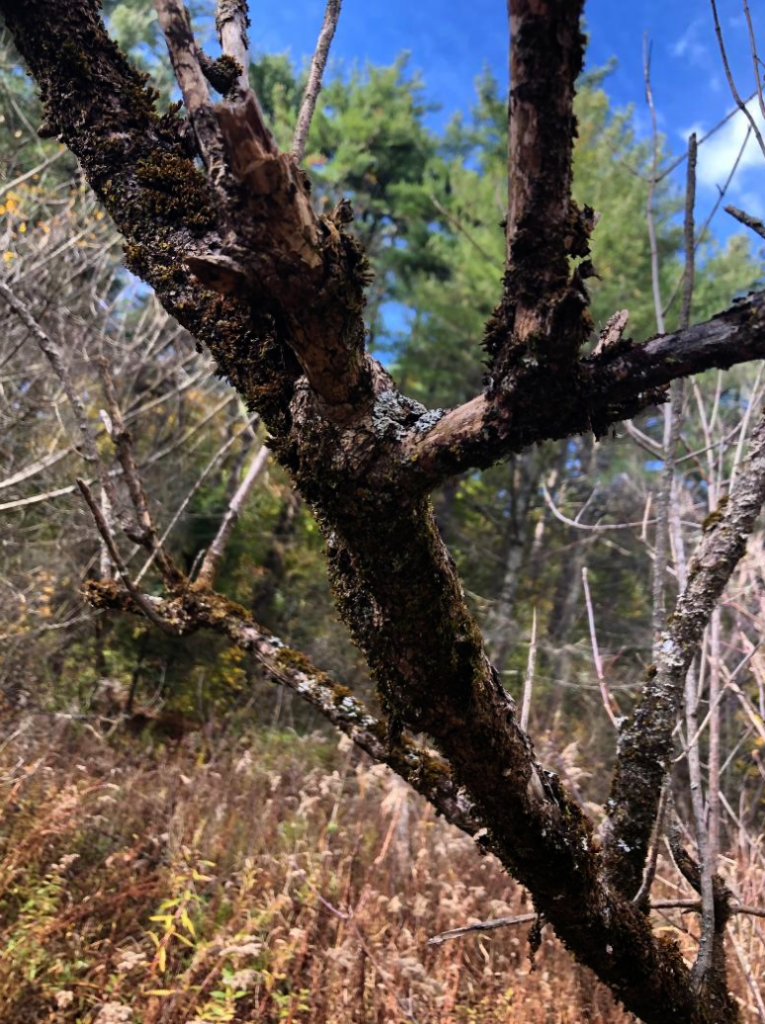
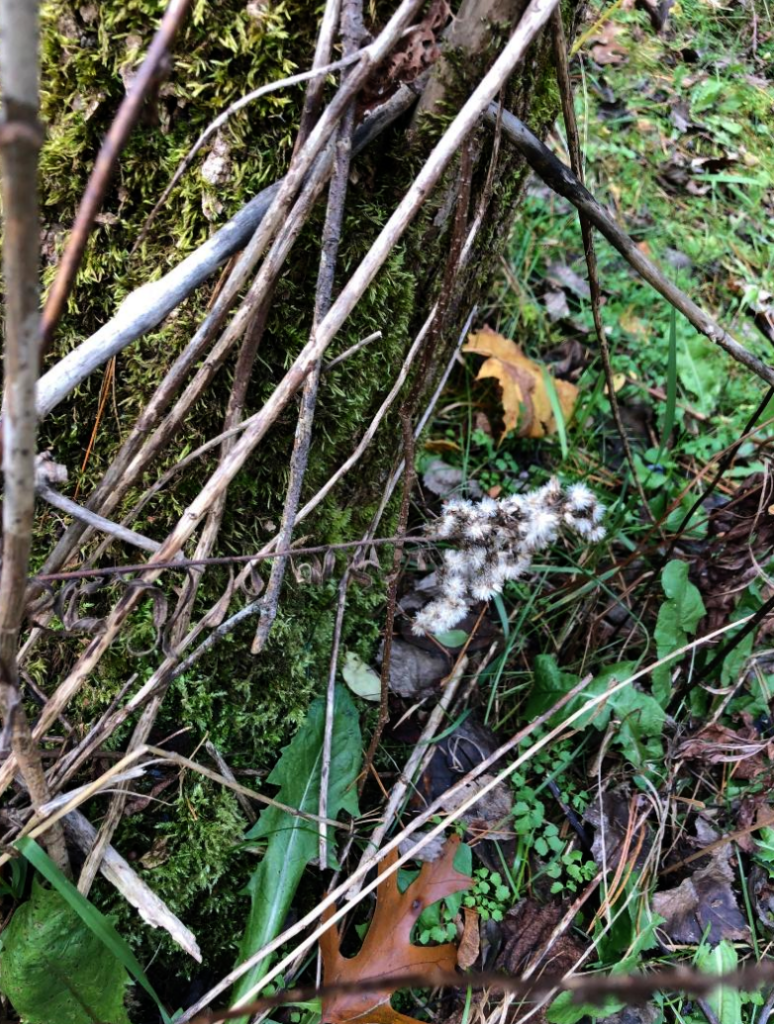
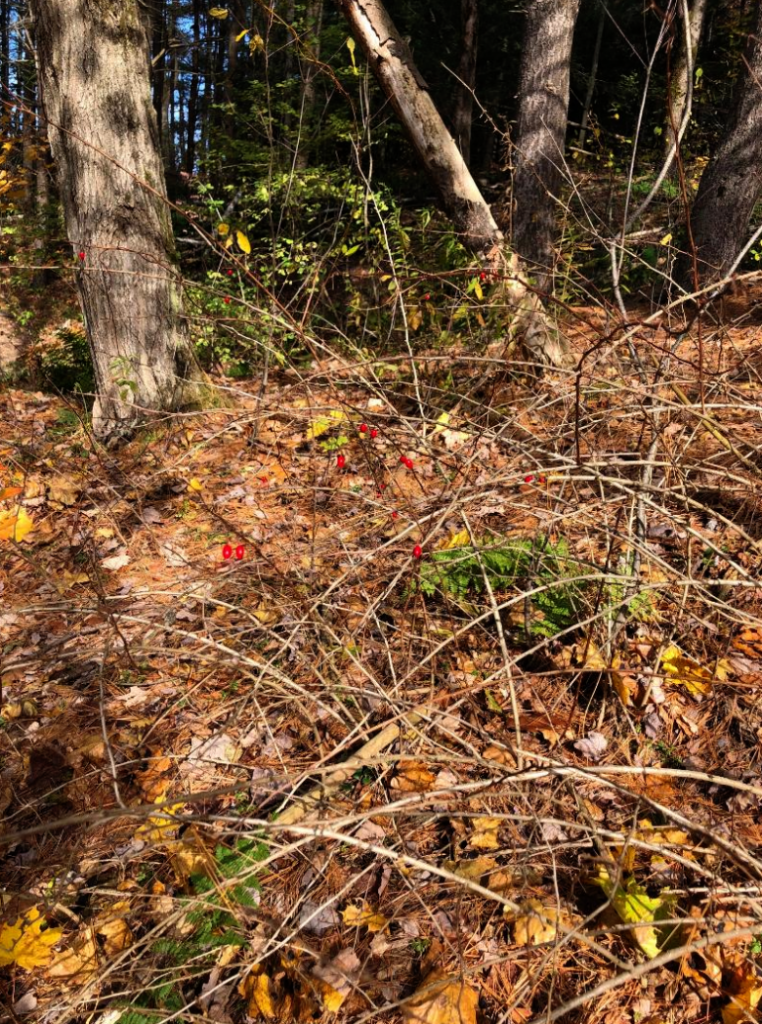

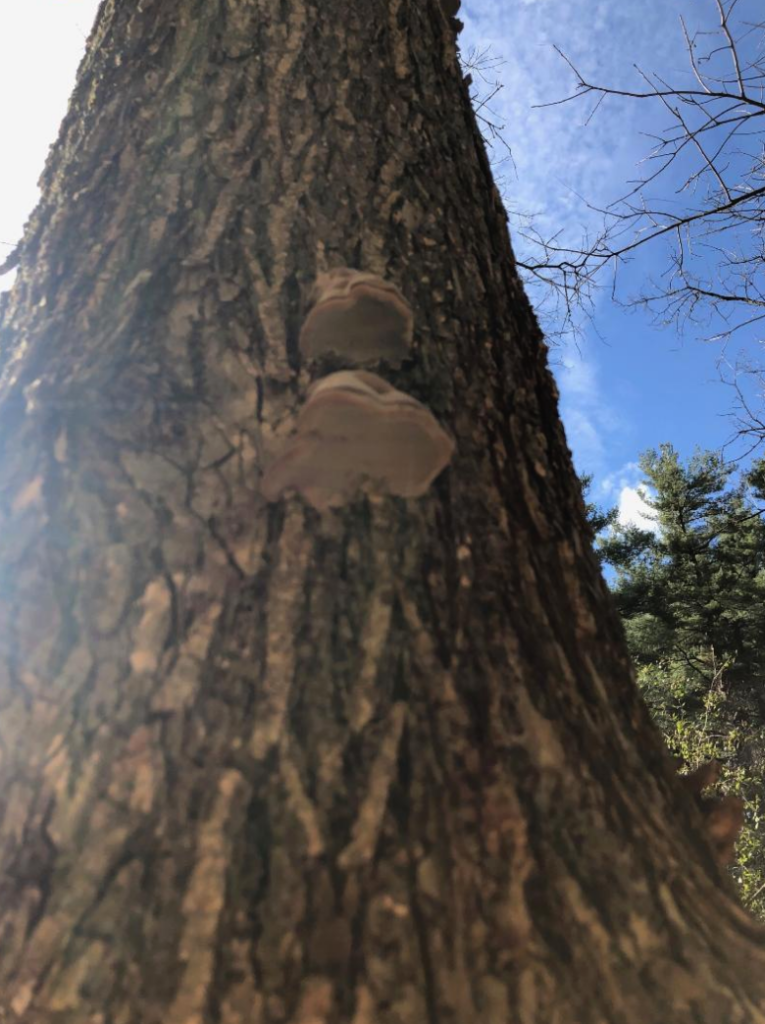
The act of mapping the area before making another visit helped for me to see the big picture changes in the area since I had last been there. The change in water levels was the biggest difference, but the changing of attached leaves in trees and smaller bushes came to mind after coming back from another visit. The map helped me to see how much one spot can be affected or even unaffected over time and throughout the changing of seasons and influences of nature. Some places that you walk past every day and don’t seem any different over time, but when there is one place that you cataloged the changes of, it is clear that over time that are major parts of the landscape that are changing such as the composition of the stream bed and the visual forms of the vegetation in the area. In a way I feel more connected with the area since I have invested so much time in seeing how it has progressed over time.

